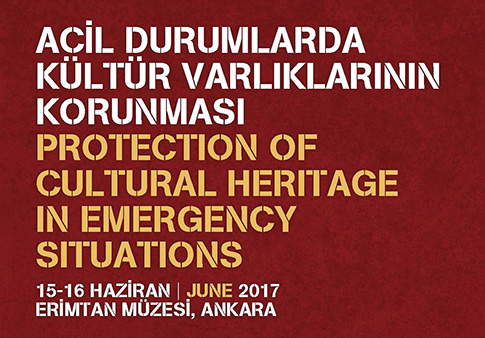[First posted in AWOL 24 April 2014, updated 22 February 2018]
Open Access Publications on Persepolis from the Oriental Institute
![]()
Open Access Publications on Persepolis from the Oriental Institute
Books
- The Ritual Landscape at Persepolis. Mark B. Garrison. 2017.
- Extraction & Control: Studies in Honor of Matthew W. Stolper. Edited by Michael Kozuh, Wouter F. M. Henkelman, Charles E. Jones, and Christopher Woods. 2014.
- Seals on the Persepolis Fortification Tablets, Volume I: Images of Heroic Encounter. Mark B. Garrison and Margaret Cool Root, with contributions by Charles E. Jones. 2001.
- Persepolis and Ancient Iran (967 Photographs) 1976.
- Aramaic Ritual Texts from Persepolis. R. A. Bowman. 1970.
- Persepolis III: The Royal Tombs and Other Monuments. E. F. Schmidt. 1970.
- Persepolis Fortification Tablets. R. T. Hallock. 1969.
- Persepolis II: Contents of the Treasury and Other Discoveries. Erich F. Schmidt with contributions by Sydney P. Noe et al., Frederick R. Matson, Lawrence J. Howell, and Louisa Bellinger. 1957.
- Persepolis I: Structures, Reliefs, Inscriptions. Erich F. Schmidt with contribution by F. R. Matson. 1953.
- Persepolis Treasury Tablets. George G. Cameron. 1948.
- The Persepolis Expedition. Erich F. Schmidt. Originally published in 1941.
- Flights Over Ancient Cities of Iran.Erich F. Schmidt. 1940.
- The Treasury of Persepolis and Other Discoveries in the Homeland of the Achaemenians Erich F. Schmidt. 1939.
- A New Inscription of Xerxes from Persepolis Ernst E. Herzfeld. 1932.
Born Digital Publications
- Persepolis Fortification Archive via On-Line Cultural Heritage Environment (OCHRE)
- Images of Persepolis Fortification Tablets at the Cuneiform Digital Library Initiative [click on “CDLI Search” and enter “OIP 092” in the form under “Primary Publication”]
- Persepolis Fortification Archive Web Presence at the Oriental Institute
- The Persepolis Fortification Archive Blog
- Persepolis: Images of an Empire
- Download the Exhibition Brochure for Perseopolis: Images of an Empire.
- Persepolis Fortification Archive Project Annual Reports
For an up to date list of all Oriental Institute publications available online see:






 Making Traditional Pottery Sustainable Today: Three Case Studies in Akita Prefecture, Japan
Making Traditional Pottery Sustainable Today: Three Case Studies in Akita Prefecture, Japan Notes on the Representation of the Face of Cyrus the Great
Notes on the Representation of the Face of Cyrus the Great The Chocolate Flint Mines in the Udorka Valley (Częstochowa Upland) – a Preliminary Report on the Field and Lidar SurveysTaken from
The Chocolate Flint Mines in the Udorka Valley (Częstochowa Upland) – a Preliminary Report on the Field and Lidar SurveysTaken from The Cucuteni – Trypillia ‘Big Other’ – Reflections on the Making of Millennial Cultural Traditions
The Cucuteni – Trypillia ‘Big Other’ – Reflections on the Making of Millennial Cultural Traditions
 The monumental fountain in the Athenian Agora: reconstruction and interpretation
The monumental fountain in the Athenian Agora: reconstruction and interpretation Huosiland: A Small Country in Carolingian Europe
Huosiland: A Small Country in Carolingian Europe The Classification of Chalcolithic and Early Bronze Age Copper and Bronze Axe-heads from Southern Britain
The Classification of Chalcolithic and Early Bronze Age Copper and Bronze Axe-heads from Southern Britain Archaeological Heritage Policies and Management Structures
Archaeological Heritage Policies and Management Structures Ceramic manufacturing techniques and cultural traditions in Nubia from the 8th to the 3rd millennium BC
Ceramic manufacturing techniques and cultural traditions in Nubia from the 8th to the 3rd millennium BC Journal of Hellenistic Pottery and Material Culture Volume 2 2017edited by Dr Patricia Kögler, Dr Renate Rosenthal-Heginbottom and Prof. Dr Wolf Rudolph (Heads of Editorial Board). xii+220 pages; illustrated throughout in colour and black & white. 2 2017.
Journal of Hellenistic Pottery and Material Culture Volume 2 2017edited by Dr Patricia Kögler, Dr Renate Rosenthal-Heginbottom and Prof. Dr Wolf Rudolph (Heads of Editorial Board). xii+220 pages; illustrated throughout in colour and black & white. 2 2017. Who Owns the Past?Archaeological Heritage between Idealism and Destruction
Who Owns the Past?Archaeological Heritage between Idealism and Destruction The Impact of the Fall of Communism on European Heritage
The Impact of the Fall of Communism on European Heritage Portable Altars
Portable Altars












































